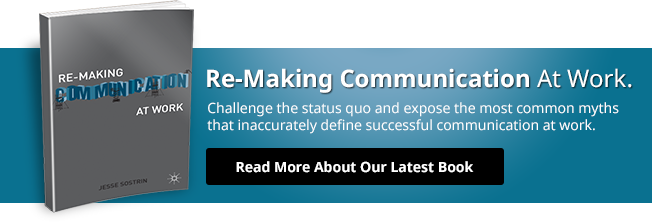Spotting Patterns of Communication
A pattern profile is a simple way of focusing on the core issue(s) involved in unwanted patterns of communication and interaction. It includes a snapshot of the challenge, related episodes, and potential alternative episodes required to re-make the unwanted pattern into something better.
Here are two common patterns that show up in the world of work:
Patterns of Self-Handicapping
Description: This pattern shows up when intentional self-sabotaging acts such as setting unattainably high goals, taking on too much, procrastinating, or purposefully reducing effort become forms of self-handicapping that precipitate failure. Not surprisingly, these behaviors severely undermine a person’s chances of performing effectively and they can impact patterns of communication and interaction that include collaborative elements. Self-handicapping suggests that an individual’s expectation about their likelihood of accomplishing a given task affects their success in completing it.
Typical Episodes: Low levels of individual morale, reduced self-efficacy and confidence, missed deadlines, repeated conversations about follow through and shared accountability, and reduced trust among colleagues.
Potential Alternative Episodes: Realistic goal setting, strength-based work planning, proactive support checks from management, and increased trust among team members.
Patterns of Perfectionism
Description: While perfectionism can be an admirable trait under certain circumstances, being excessive or overly compulsive about obtaining accurate and predictable results can prevent/impede performance. Re-making communication at work by its very nature requires a certain degree of risk through trial and error—the willingness to make something different. Perfectionist behaviors that seek to predictably control experience makes people less likely to have uncharted conversations, admit failure, and risk learning new things. It can also damage interpersonal relationships, decrease productivity, and harm physical and emotional health in its most extreme forms.
Typical Episodes: Things do not get done (unless it is perfect, it is not finished), too much focus on polish/look and not enough emphasis on substance/impact, the impression that “people are not good enough,” and avoidance of uncertainty and change.
Potential Alternative Episodes: Maintaining realistic expectations for finished products, designing work flows that prioritize substance over polish, distinguishing between excellence and perfection, separating people’s work from their personalities, and accepting uncertainty in change in staged increments to increase comfort over time.
To truly understand how to spot and re-make unwanted patterns of communication and interaction, get my book, Re-Making Communication at Work. Read a sample chapter here…

